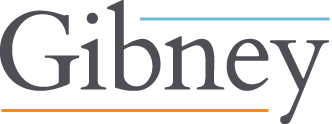What is the Diversity Visa Lottery?
The Diversity Immigrant Visa Program, which is administered by the U.S. Department of State, permits up to 50,000 diversity immigrant visas to be granted for fiscal year 2017 to persons from countries with low immigration rates to the United States. Foreign nationals are selected for eligibility to file an application for permanent residence under this program on the basis of a lottery.
When can I apply?
The U.S. Department of State will accept applications for the 2017 diversity lottery between 12 noon Eastern Daylight Time (EDT) on Thursday, October 1, 2015, and 12 noon EDT on Tuesday, November 3, 2015. Applicants are encouraged to apply in the early part of the application period.
Who is eligible?
In order to enter the diversity visa lottery, an individual must be a national of an eligible country and must meet minimum education/work requirements.
Nationality:
No visas may be awarded to foreign nationals of countries that have sent more than 50,000 immigrants to the U.S. over the period of the last five years. For the 2017 diversity lottery, nationals of the following countries are NOT eligible to apply: Bangladesh, Brazil, Canada, China (mainland born), Colombia, Dominican Republic, Ecuador, El Salvador, Haiti, India, Jamaica, Mexico, Nigeria, Pakistan, Peru, the Philippines, South Korea, the United Kingdom (except Northern Ireland) and its dependent territories, and Vietnam. Persons born in Hong Kong SAR, Macau SAR, and Taiwan are eligible.
Nationality is defined by the location of a person’s birth. However, if a foreign national is ineligible to apply based on their country of birth, there are two alternate ways to qualify. First, a foreign national whose spouse was born in a country whose natives are eligible to apply, may apply provided the spouse is eligible. Second, a foreign national who was born in a country whose natives are ineligible to apply is eligible to apply if neither of his/her parents were born in or legally resided in that country at the time of the foreign national’s birth.
Education/Work:
In order to enter the diversity lottery, a foreign national must have either a high school education or its equivalent, or two years of work experience within the past five years in an occupation requiring at least two years training or experience.
How Do I Apply?
Diversity lottery submissions are only accepted electronically. The electronic applications are submitted via the U.S. Department of State’s website.
Applicants may only submit ONE lottery entry; individuals who attempt to submit more than one application will be disqualified from participating in the lottery.
A diversity application must be accompanied by digital photographs of the applicant, the applicant’s spouse (if applicable), and the applicant’s dependent children (if applicable) taken in accordance with specific requirements set forth in detail on the U.S. Department of State’s website. Note: each spouse may submit his/her own application if he/she otherwise qualifies. In completing the electronic entry form, the following data will be required: full name, date of birth, gender, city of birth, country of birth, country of eligibility for the program, photograph(s), mailing address, current country of residence, phone number (optional), email address, educational level, marital status, number of children, and information about spouse and children.
Winners of the lottery will be selected in a random computerized process. After entering the lottery, it is critical to safeguard the confirmation page as it contains information that is needed to check the status of the application. As of May 3, 2016, applicants can check the status of their application using their confirmation number through the Entry Status Check section of the E-DV website. Lottery winners will not receive correspondence in the mail to confirm the selection of their application; the status of the application can only be checked through the E-DV website.
Selection in the lottery does not automatically confer lawful permanent resident status. Selected individuals (and their dependents) are deemed eligible to apply for lawful permanent resident status. In order to become a permanent resident of the U.S., a lottery winner’s application for permanent residence must be filed and approved by September 30, 2017. The permanent residence application may be filed either via adjustment of status (if the foreign national is in the U.S. in a valid nonimmigrant status) or via consular processing.
Finally, please note that more lottery “winners” are selected than there are immigrant visas available because some winners will not be eligible to become U.S. permanent residents of the U.S. Accordingly, some individuals who are selected to apply for diversity visas may ultimately be unable to become U.S. permanent residents if the available diversity immigrant visas are assigned prior to their permanent residence application being adjudicated.
Where can I get more information?
Instructions for filing an application for the 2017 Diversity Visa Lottery, and information regarding photograph specifications, may be obtained from the U.S. Department of State’s website.
For specific legal advice, please contact your Gibney representative.

